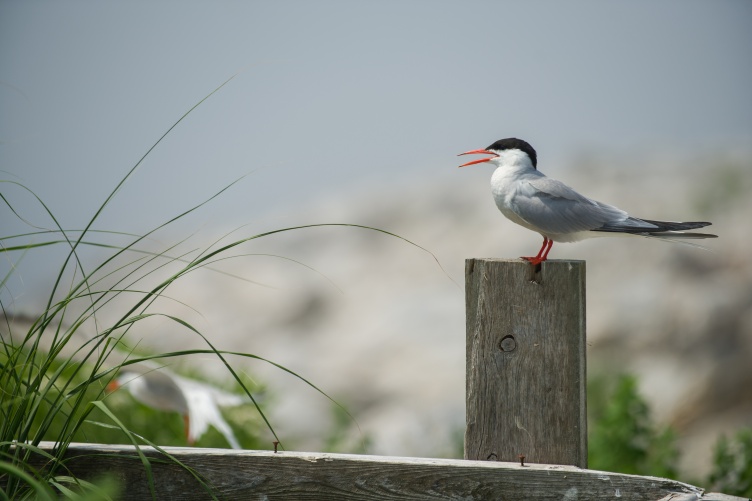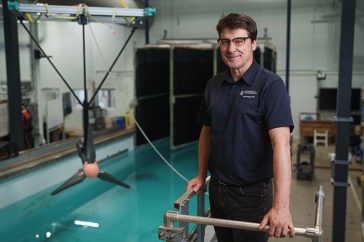
A common tern on the Isles of Shoals. “The terns are an important part of the larger picture because they are marine consumers and offer a unique perspective of what is happening in fish populations just by sampling what is available to them," says Nathan Furey.
UNH researchers have been awarded over $1.25 million from the Office of Naval Research and the National Oceanic and Atmospheric Administration to take a deeper dive on the impact of climate change on the dynamic marine ecosystems in the Gulf of Maine in New Hampshire and southern Maine. Their findings could promote proper conservation and management in a rapidly changing Gulf of Maine.
“We know the Gulf of Maine is warming, and we know species are responding, but it’s important to know more broadly how ... this could be affecting some of the core species in the Gulf of Maine like cod and terns.”
“We know the Gulf of Maine is warming, and we know species are responding, but it’s important to know more broadly how communities are responding — from the seafloor to the surface — to give us a better snapshot of what food is available and how this could be affecting some of the core species in the Gulf of Maine like cod and terns,” says Nathan Furey, assistant professor of biological sciences.
The five-year project will integrate cutting-edge technology with traditional fisheries sampling to determine the effects of environmental changes on the ecosystems in local and regional waters by focusing on both the Atlantic cod, which has held a long historical importance in the Gulf of Maine, and the common tern, which has a large breeding colony at the Isles of Shoals.
Researchers will use high-tech modes of tracking to monitor the movements of Atlantic cod and terns. The team will use both passive and active acoustics to provide measurements of marine biodiversity in the areas where cod and terns are tracked. Environmental DNA, or eDNA, will be used to collect a variety of samples from the water column to measure DNA released from different species, which can be present in the water, the air and other surroundings. Researchers will also examine the diets of the Atlantic cod and terns by analyzing gut and fecal samples.
“We’re bringing together all these emerging technologies to get a better idea on what is happening on the bottom of the water column, where the cod live and feed, as well as at the surface, where the terns feed,” says Furey. “The terns are an important part of the larger picture because they are marine consumers and offer a unique perspective of what is happening in fish populations just by sampling what is available to them.”
Researchers hope their findings will help promote proper conservation and management in a rapidly changing Gulf of Maine by determining at what scales ecosystem components change and the best methods to detect such variation.
Additional researchers on the project are Allison Watts, research assistant professor of civil and environmental engineering; Elizabeth Craig, director of seabird science and academic coordinator at Shoals Marine Laboratory; Graham Sherwood and Riley Young-Morse of the Gulf of Maine Research Institute; and Jackie Motyka of the Northeastern Regional Association of Coastal Ocean Observing Systems.
-
Written By:
Robbin Ray ’82 | UNH Marketing | robbin.ray@unh.edu | 603-862-4864



















































